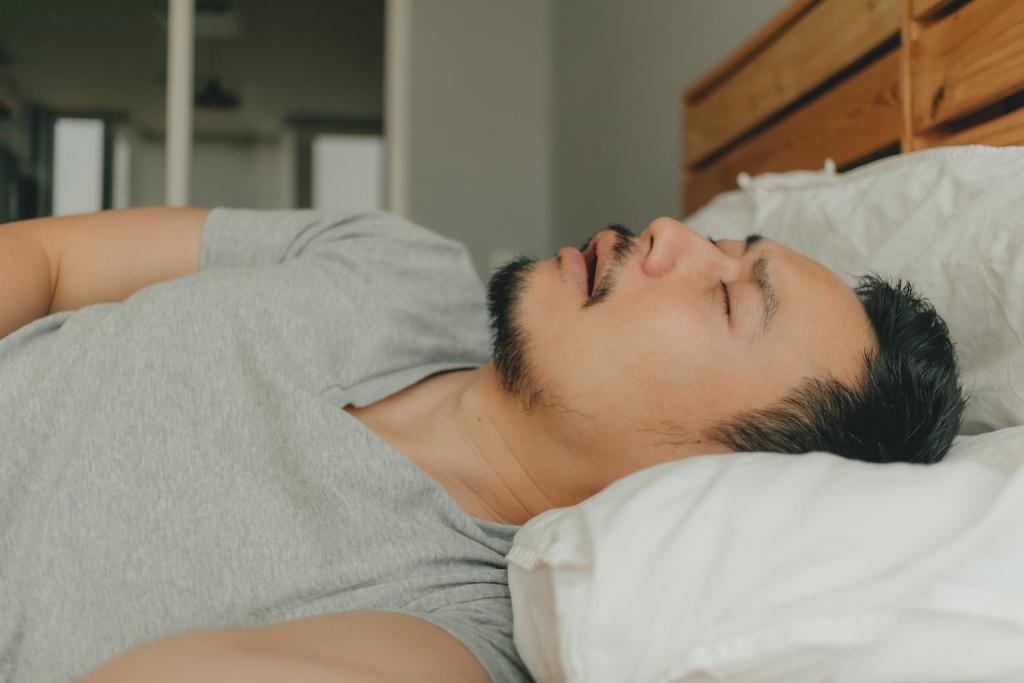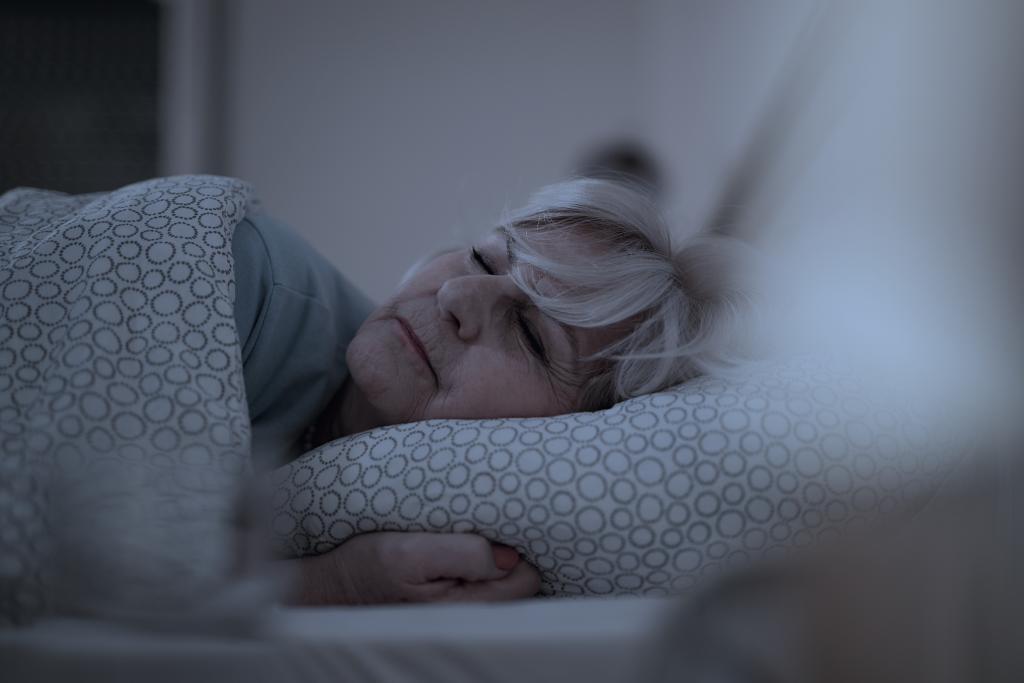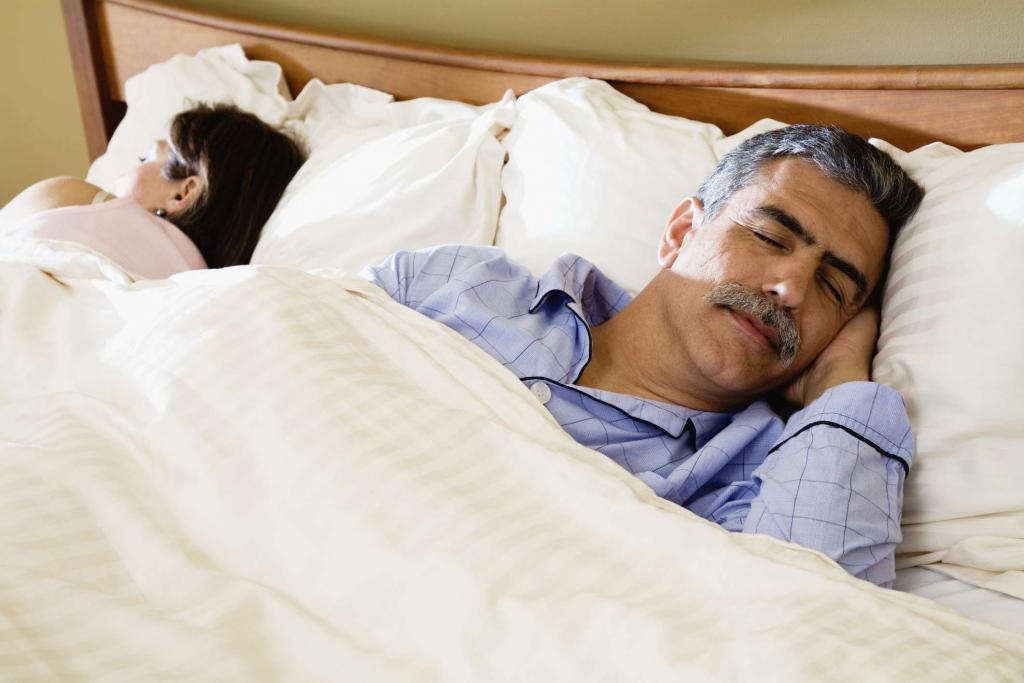Chronic obstructive pulmonary disease (COPD) is a lung disorder that can leave people breathless, fatigued, and struggling to breathe well. If you have COPD, you may sometimes have great difficulty catching your breath after walking or exercise. You may also find that you are breathless just sitting or relaxing.
The medical term for shortness of breath is dyspnea. Dyspnea occurs in COPD because your lungs become damaged, which prevents them from working as they are designed.
What Is COPD?
Chronic Obstructive Pulmonary Disease (COPD) is a chronic inflammatory lung disease characterized by obstructed airflow that impairs breathing in and out of the lungs. COPD includes emphysema, which is characterized by damage to lung tissue, and chronic bronchitis, which involves a persistent, mucus-producing cough. Many people who have COPD suffer from both.
COPD affects almost 16 million people in the United States alone and is the third most common cause of death due to disease. Smoking is the primary cause of COPD, with smoking history noted in up to 75% of COPD cases. Secondhand smoke, exposures to other pollutants, and more rarely, genetic conditions, can also increase the risk of developing COPD. COPD is a progressive disorder, which means that it gets worse over time, leading to shortness of breath, wheezing, chest tightness, persistent cough, and susceptibility to infections like pneumonia.
Symptoms
COPD symptoms often don’t appear until significant lung damage has occurred, and they usually worsen over time, particularly if smoking exposure continues.

Signs and symptoms of COPD may include:
- Shortness of breath, especially during physical activities
- Wheezing
- Chest tightness
- A chronic cough that may produce mucus (sputum) that may be clear, white, yellow or greenish
- Frequent respiratory infections
- Lack of energy
- Unintended weight loss (in later stages)
- Swelling in ankles, feet or legs
People with COPD are also likely to experience episodes called exacerbations, during which their symptoms become worse than the usual day-to-day variation and persist for at least several days.
Causes
The main cause of COPD in developed countries is tobacco smoking. In the developing world, COPD often occurs in people exposed to fumes from burning fuel for cooking and heating in poorly ventilated homes.
Only some chronic smokers develop clinically apparent COPD, although many smokers with long smoking histories may develop reduced lung function. Some smokers develop less common lung conditions. They may be misdiagnosed as having COPD until a more thorough evaluation is performed.
Risk factors
Risk factors for COPD include:
- Exposure to tobacco smoke. The most significant risk factor for COPD is long-term cigarette smoking. The more years you smoke and the more packs you smoke, the greater your risk. Pipe smokers, cigar smokers and marijuana smokers also may be at risk, as well as people exposed to large amounts of secondhand smoke.
- People with asthma. Asthma, a chronic inflammatory airway disease, may be a risk factor for developing COPD. The combination of asthma and smoking increases the risk of COPD even more.
- Occupational exposure to dusts and chemicals. Long-term exposure to chemical fumes, vapors and dusts in the workplace can irritate and inflame your lungs.
- Exposure to fumes from burning fuel. In the developing world, people exposed to fumes from burning fuel for cooking and heating in poorly ventilated homes are at higher risk of developing COPD.
- Genetics. The uncommon genetic disorder alpha-1-antitrypsin deficiency is the cause of some cases of COPD. Other genetic factors likely make certain smokers more susceptible to the disease.
Complications
COPD can cause many complications, including:
- Respiratory infections. People with COPD are more likely to catch colds, the flu and pneumonia. Any respiratory infection can make it much more difficult to breathe and could cause further damage to lung tissue.
- Heart problems. For reasons that aren’t fully understood, COPD can increase your risk of heart disease, including heart attack
- Lung cancer. People with COPD have a higher risk of developing lung cancer.
- High blood pressure in lung arteries. COPD may cause high blood pressure in the arteries that bring blood to your lungs (pulmonary hypertension).
- Depression. Difficulty breathing can keep you from doing activities that you enjoy. And dealing with serious illness can contribute to the development of depression.
Prevention
Unlike some diseases, COPD typically has a clear cause and a clear path of prevention, and there are ways to slow the progression of the disease. The majority of cases are directly related to cigarette smoking, and the best way to prevent COPD is to never smoke — or to stop smoking now.
If you’re a longtime smoker, these simple statements may not seem so simple, especially if you’ve tried quitting — once, twice or many times before. But keep trying to quit. It’s critical to find a tobacco cessation program that can help you quit for good. It’s your best chance for reducing damage to your lungs.
Occupational exposure to chemical fumes and dusts is another risk factor for COPD. If you work with these types of lung irritants, talk to your supervisor about the best ways to protect yourself, such as using respiratory protective equipment.
Here are some steps you can take to help prevent complications associated with COPD:
- Quit smoking to help reduce your risk of heart disease and lung cancer.
- Get an annual flu vaccination and regular vaccination against pneumococcal pneumonia to reduce your risk of or prevent some infections.
- Talk to your doctor if you feel sad or helpless or think that you may be experiencing depression.
Can Breathing Difficulties from COPD Affect Sleep?
Sleep troubles are common in those who suffer from COPD. People who have a hard time breathing at night due to COPD may wake frequently and have trouble falling asleep or staying asleep, throughout the night. Overall reduced sleep time and sleep quality may also occur.
In addition to the symptoms of COPD, some medications used to treat COPD can make sleeping problems worse. Drugs like theophylline (Theo-24, Theochron, Elixophylline) improve chest symptoms in COPD patients but reduce sleep quality for some.
Those with COPD can also experience oxygen desaturation (hypoxemia), or reduced oxygen levels in the blood. Severe COPD is often characterized by hypoxemia during the day, and worse daytime hypoxemia is correlated with more episodes of hypoxemia during sleep. Hypoxemia especially impacts rapid eye movement (REM) sleep, the stage of sleep where dreams occur.
When people with COPD experience sleep disruptions and don’t get enough sleep, they become sleep deprived. Sleep deprivation negatively impacts focus, memory, judgment, and mood, and can make you feel very tired during the day.

Why Can’t I Breathe at Night?
Over 75% of individuals with COPD report nighttime symptoms and difficulty sleeping. People with lung disorders commonly report that breathing is more difficult while lying down, so patients with COPD may notice their symptoms worsen when they get into bed.
Since wheezing and coughing can understandably make falling asleep very difficult, some COPD patients attempt to sleep while sitting upright in a chair. And, although sitting upright may relieve chest symptoms, it can also make falling asleep more difficult. As such, COPD patients may suffer from insomnia as they stay awake struggling to find a comfortable sleeping position.
How does COPD destroy the lungs?
COPD is a group of lung disorders. Emphysema and chronic bronchitis are the two main conditions included in this category. These conditions attack your lungs in different ways.
Emphysema
Emphysema destroys the walls between the air sacs in your lungs. This creates larger but fewer air sacs. The total surface area for gas exchange therefore becomes smaller. The lungs also have trouble supplying oxygen to the tissues of the body and getting rid of carbon dioxide.
This damage also reduces the amount of air your lungs can hold and move. As a result, you may not have the lung capacity to do normal tasks. This will cause you to grow tired and breathless quickly.
Bronchitis
Bronchitis inflames and irritates the lining of your airways. Over time, chronic bronchitis causes the lining to grow thick and inflexible. When your airways can’t properly clear themselves, excess mucus will become a problem. Eventually your airways will become very rigid and clogged by mucus. This makes breathing difficult. You may find that you’re out of breath much faster than normal. You may also feel tired more easily.
The scale of breathlessness
There are a number of ways to measure breathlessness. Many doctors use a system called the Modified Medical Research Council Dyspnea Scale (MMRC). Other scales include the baseline dyspnea index (BDI) and the oxygen cost diagram (OCD).
According to a study in Annals of Thoracic MedicineTrusted Source, the MMRC is the most common scale because it is simple, easy to use, and a valid measurement of dyspnea in COPD.
To use the MMRC scale, you choose one of five statements to describe your breathlessness:
- “I only get breathless with strenuous exercise.”
- “I get short of breath when hurrying on the level or walking up a slight hill.”
- “I walk slower than people of the same age on the level because of breathlessness or have to stop for breath when walking at my own pace on the level.”
- “I stop for breath after walking about 100 yards or after a few minutes on the level.”
- “I am too breathless to leave the house” or “I am breathless when dressing.”
Doctors can use your answer to determine certain treatments and predict survival. When used in combination with a FEV1 lung function test, your doctor can also diagnose the severity of your breathing problem.
12 Ways to Breathe Better With COPD
Difficulty breathing is one of the most troubling symptoms of chronic obstructive pulmonary disease (COPD). Even if it happens only occasionally, the feeling of breathlessness can be uncomfortable and scary.
COPD is an umbrella term for a group of lung diseases, including chronic bronchitis and emphysema, that make it increasingly difficult to breathe because of blocked airways.
While there’s no cure for COPD, there are a number of simple things you can do to ease breathlessness and keep your disease from getting worse.
“Many people with COPD and their doctors are so focused on medication that they don’t really talk about lifestyle changes, such as breathing exercises for COPD, and how to modify their behavior to improve breathing,” says David A. Beuther, MD, PhD, a pulmonologist at National Jewish Health in Denver.
Below are 12 simple lifestyle shifts that can help ease your COPD symptoms and increase your energy.
Learn This Breathing Exercise for COPD: “Pursed Lip”
When you are experiencing shortness of breath, “pursed lip” breathing can relax your airways and help you get back to normal, says the American Lung Association (ALA).
Here’s how to do this exercise:
- Sit down and relax your neck and shoulders.
- Take in a deep breath through your nose, keeping your mouth closed and filling up as much of your lungs as you can.
- Purse your lips (like you are trying to whistle) and slowly and gently release the air through your mouth for as long as you can. It’s important that the exhale is longer than the inhale.
- Repeat three or four times.
Try doing this technique once or twice a day, as well as whenever you’re having trouble catching your breath.

Drink Plenty of Water
Staying well hydrated is important for everyone, but it is especially important for people with COPD, says Dr. Beuther.
The disease can cause the mucus produced by the lungs to become thick, sticky, and difficult to cough up. Drinking enough water can thin the mucus and make it much easier to remove, easing breathing, Beuther explains.
The ALA recommends that people with COPD aim to get at least six to eight 8-ounce glasses of water a day.
But talk to your doctor about how much water you can safely drink: Some people with COPD have conditions such as heart failure that could be made worse by taking in too much fluid.
Sit (or Stand) Correctly
Slouching can make it more difficult to breathe, notes the Canadian Lung Association. Straightening your back, on the other hand, helps open the airways.
If you find yourself experiencing shortness of breath, try shifting into one of these positions:
When Sitting
Place both feet flat on the ground, then lean your head and shoulders forward slightly, keeping your back straight. Rest your arms on your knees and keep them relaxed.
When Standing
Lean your back against a wall, chair, or counter. Keeping your feet slightly apart, relax and lean your head and shoulders forward slightly, keeping your back straight. Rest your hands lightly on your thighs.
Wedge More Activity Into Your Day
Regular exercise can make a big difference in breathing ability and COPD symptoms.
“A lot of people with COPD get more and more out of breath, but it’s not because of their lung function — it’s because they’re deconditioned,” explains Beuther.
While exercise can’t undo lung damage, it can strengthen your respiratory muscles, improve your circulation, and help you use oxygen more efficiently, says Daniel Ouellette, MD, a pulmonologist and the associate director of medical critical care at Henry Ford Hospital in Detroit.
At first, any physical activity may cause uncomfortable symptoms, like shortness of breath, but that’s part of the process, Dr. Ouellette notes.
“I try to reassure people that exercise is beneficial and that they’re not going to hurt themselves by trying to exercise — in fact, it will improve their ability to do things,” he says.
While you should always check with your provider before starting an exercise routine, simply getting out for a short walk every day can be a simple, and safe, way to get started.
Know — and Avoid — Your Triggers
If you have COPD and allergies or asthma, certain things in the environment — such as dust, mold, and pet dander — may aggravate your COPD symptoms
While it can be hard to avoid airborne allergens entirely, reducing your exposure to triggers, particularly in your home, can help you breathe easier.
This may mean putting dust covers on your pillows and mattress, and keeping your pets out of the bedroom, says Loutfi Aboussouan, MD, a pulmonologist at the Cleveland Clinic Respiratory Institute in Ohio.
You may also want to use high-efficiency particulate air (HEPA) filters to remove dust and other irritants from the air and, if mold is an issue for you, run a dehumidifier in your home.
Prioritize Sleep
“When you sleep better, you’ll feel better and breathe better,” Dr. Aboussouan says.
In fact, a study published in November 2019 in the journal Chest found a strong association between poor sleep and worsening of COPD symptoms.
Poor sleep can weaken immune function and increase inflammation throughout the body, which experts believe may impact COPD. Tiredness also impairs memory, which might cause some individuals to take their COPD medications incorrectly.

Many people with COPD have an underlying sleep disorder, like sleep apnea, that makes it difficult to get a good night’s sleep.
If you’re having trouble getting at least eight hours of shut-eye each night, talk to your doctor about ways to improve your sleep.
Eat Well
Food is the fuel your body needs to perform all activities, including breathing, says the ALA. Getting the right mix of nutrients each day can help ease breathlessness and also increase your energy level.
Eating a balanced diet also helps you maintain a healthy weight, which is particularly important for people with COPD.
If you’re overweight, your heart and lungs have to work harder, making breathing more difficult. In addition, the extra weight might demand more oxygen, says the Cleveland Clinic.
If you’re underweight, on the other hand, you may feel weak and tired. You might also be more vulnerable to potentially dangerous lung infections.
The best diet plan for you will depend on your current body weight, and whether you need to lose or gain pounds.
Talk to your doctor and a registered dietitian about diet changes that may help ease your COPD symptoms and help you feel better.
Get Your Annual Vaccines — and the COVID-19 Shot
Both the flu and pneumonia vaccinations are very important for people with COPD, says Joseph Khabbaza MD, a pulmonologist at the Cleveland Clinic in Ohio.
“The flu shot is recommended every year, and you should be getting the vaccine the moment it becomes available if you have COPD or other chronic lung disease,” he advises.
You should also get immunized against pneumonia because this lung infection poses a high risk to people with COPD. The Centers for Disease Control and Prevention (CDC) recommends the vaccine for all adults who are 65 or older, but if you have COPD you qualify regardless of your age.
Because people with COPD are at a higher risk for developing severe illness from COVID-19, it’s also extremely important to get the COVID-19 vaccine, says Michael Sims, MD, clinical director of the COPD Program at Penn Medicine in Philadelphia.
This vaccine is not only very effective at reducing your risk of contracting COVID-19, it also helps guard against complications of respiratory failure and death — protection that is particularly important for people with COPD, notes Dr. Sims.
Stamp Out Stress
Stress can be a vicious cycle for people with COPD. Not being able to breath well creates anxiety. And, anxiety makes you breathe faster, which makes you even more short of breath, notes the ALA.
On top of your COPD, there may be things in your life — from your relationships to your job — that make you feel anxious and, in turn, cause your COPD symptoms to flare.
Try to identify stressors in your life and strategize about ways to minimize them. Maybe you need to work on problematic relationships, tackle money issues, or do a better job of pacing yourself and setting priorities.
You may want to enlist the help of a therapist or social worker, who can help you through this process.
In addition, start incorporating some relaxation techniques into your daily routine, such as breathing exercises, visualizing, mediation, and yoga, recommends the ALA.
These activities help slow your breathing, and can help prevent stress from kicking off a vicious cycle of increasing anxiety and breathlessness.
Avoid Smoking — and Smokers
Smoking and exposure to tobacco smoke are the leading risk factors for COPD disease progression and death, says the World Health Organization.
If you’re currently a smoker, the most important step you can take to ease your symptoms and improve your health is to quit, says Dr. Khabbaza.
Quitting smoking is tough, so ask your doctor about programs they recommend. A good first call is 800-QUIT-NOW, a resource from the CDC that offers free coaching, quit plans, and education materials.
Or, check out the ALA’s Freedom From Smoking program, a seven-week clinic (in-person or online) that takes you through the process of quitting smoking one step at a time.
People with COPD should also try to avoid secondhand smoke (smoke that comes from the end of a lit cigarette or pipe or has been exhaled by a person smoking), as well as third-hand smoke, which refers to the smell of smoke left behind on surfaces, such as clothing, carpets, and in cars, says Aboussouan.
Use Your Inhaler Correctly
Regular, correct use of inhaled medicines help control symptoms of COPD symptoms and makes it easier to breathe.
But there are many different types of inhalers, and each requires a different technique.
COPD symptoms can actually get worse if you’re not taking your medication properly, says Robert A. Wise, MD, medical director of the pulmonary function laboratory at Johns Hopkins Asthma and Allergy Center in Baltimore.
To make sure you’re using your inhaler the correct way — and the right dose of medicine is reaching your lungs — it’s a good idea to periodically go over your technique with your doctor, Dr. Wise says.
“Very often if someone is worsening, it’s not a matter of changing their medication, but rather ensuring that they are using their inhaler properly,” he adds.

Increase Your COPD Knowledge
Learning about COPD and how your lungs function can help you better understand and manage your condition, says Beuther.
If possible, take advantage of any pulmonary rehabilitation programs offered by your local hospital or respiratory center.
You may find free or low-cost classes in proper nutrition and exercises you can do to improve lung function and boost energy, as well as the correct way to take your COPD medication.
Another good resource is the ALA’s Better Breathers Club program, which connects people living with lung disease to education, support, and COPD peer-support communities around the country.
Preserving lung function
Though COPD won’t go away, you can take steps to control your breathlessness. Use the tips above to prevent dyspnea, slow the progression of your COPD, and preserve your lung function. Discuss your symptoms with your doctor to get the treatment you need.
Are Sleep Disorders Common in People with COPD?
Sleep-related breathing disorders affect breathing patterns and blood oxygen levels during sleep. Sleep-disordered breathing in COPD patients has been examined by a number of studies, although they have offered varied results on the number of patients who experience both.
COPD frequently coincides with obstructive sleep apnea (OSA), a condition characterized by gaps in breathing during sleep. Sleep apnea causes frequent and sudden nighttime awakenings, as well as drops in blood oxygen levels that accompany spikes in carbon dioxide levels. Co-occurring COPD and OSA are known as “overlap syndrome”, which is associated with more severe decreases in blood oxygen during the night.
How Do I know if I have a Sleep Disorder and COPD?
True to its name, overlap syndrome can be difficult to distinguish from isolated diagnoses of COPD or sleep-disordered breathing (SDB) alone, due to the number of symptoms shared between both disorders. These symptoms include reduced sleep quality, sudden awakenings featuring gasping and choking, headaches upon waking, and excessive daytime sleepiness. However, experts have identified certain features in COPD patients who suffer from SDB.
The presence of any of the following symptoms may prompt doctors to evaluate COPD patient’s sleeping difficulties with a sleep test:
- Snoring, gasping, or choking during the night
- Morning headache
- Excessive daytime sleepiness
- Obesity
- Reduced daytime oxygen saturation (hypoxemia)
- Increased daytime carbon dioxide saturation (hypercapnia)
- Pulmonary hypertension
- Right heart failure
- Polycythemia (high concentration of red blood cells in your blood)
- Opioid/hypnotic prescription use
- History of type 2 diabetes, heart failure, or stroke
Further, experts note that nighttime symptoms in COPD patients may be overlooked by physicians, suggesting that overlap syndrome is more common than what is currently known. Therefore, it is important for individuals with COPD to proactively report nighttime symptoms to their providers and ask if scheduling a sleep test is recommended.
How Do I Sleep With COPD?
Falling asleep with COPD can be tough, especially when symptoms worsen at night. Chest symptoms and gastroesophageal reflux (GERD), which often afflicts COPD patients can flare up when lying down. You might try sleeping in a slightly upright position – propping your head can relieve chest symptoms and make you feel more comfortable.
Because COPD patients may have additional barriers to getting good sleep, practicing good sleep hygiene habits is especially important. Follow these tips to maximize your sleep quality:
- Limit napping to under 30 minutes and avoid naps in the late afternoon. A short nap can restore energy, but a long nap or a late nap can keep you awake at night.
- Avoid eating or drinking late in the day. You want to give your body time to digest and avoid waking up during the night to use the bathroom.
- Get moving! Make sure you get at least some moderate physical activity in.
- Turn off the electronics — cut off phone, computer, and tablet use at least 30 minutes before bed.
- Quit smoking! Especially if you suffer from COPD, quitting is one of the best things you can do for your health.
Are There Treatments for Sleep Affected by COPD?
Yes, there are treatments available for COPD symptoms that negatively impact sleep or overlap with sleep-disordered breathing. Experts recommend the primary goals of therapy for overlap syndrome are to reduce hypoxemia (low blood oxygen) and hypercapnia (high blood carbon dioxide) during sleep.
Continuous positive airway pressure (CPAP) is a machine that helps keep airways open and prevent collapse during sleep by pumping in air. The CPAP machine is the first line of treatment for COPD patients with moderate to severe OSA . Additional oxygen therapy is indicated for those who experience severe daytime hypoxemia.
Medicines may also be used to treat chest symptoms and sleep symptoms in COPD patients. It is important to review all medications with your provider, as they will consider which medications may have a positive or negative impact on your sleep.

![Top Rated CPAP Machine Buyer’s Guide [current_date format=’m/Y’]](https://bestpillowsleepers.com/wp-content/uploads/2023/03/best-cpap-machine-img_6405d72310053-400x300.jpg)
![The 11 Best Cooling Weighted Blankets [current_date format=’m/Y’]](https://bestpillowsleepers.com/wp-content/uploads/2023/01/best-cooling-weighted-blankets-img_63d4ff15c615d-400x300.jpg)
![Ultimate Guide to Choosing a Best Cooling Mattress Pads [current_date format=’m/Y’]](https://bestpillowsleepers.com/wp-content/uploads/2023/01/best-cooling-mattress-pads-img_63c403115126b-400x300.jpg)
![Ultimate Guide to Choosing a Best Cooling Mattress [current_date format=’m/Y’]](https://bestpillowsleepers.com/wp-content/uploads/2023/01/ultimate-guide-to-choosing-a-best-cooling-mattress-img_63bcdba870d77-400x300.jpg)
![Ultimate Guide to Choosing a Best Cooling Comforters [current_date format=’m/Y’]](https://bestpillowsleepers.com/wp-content/uploads/2023/01/ultimate-guide-to-choosing-a-best-cooling-comforters-img_63bba2f5cd3ce-400x300.jpg)